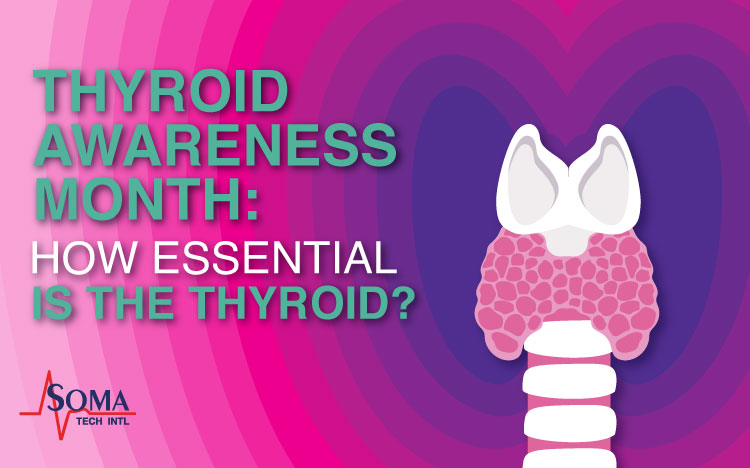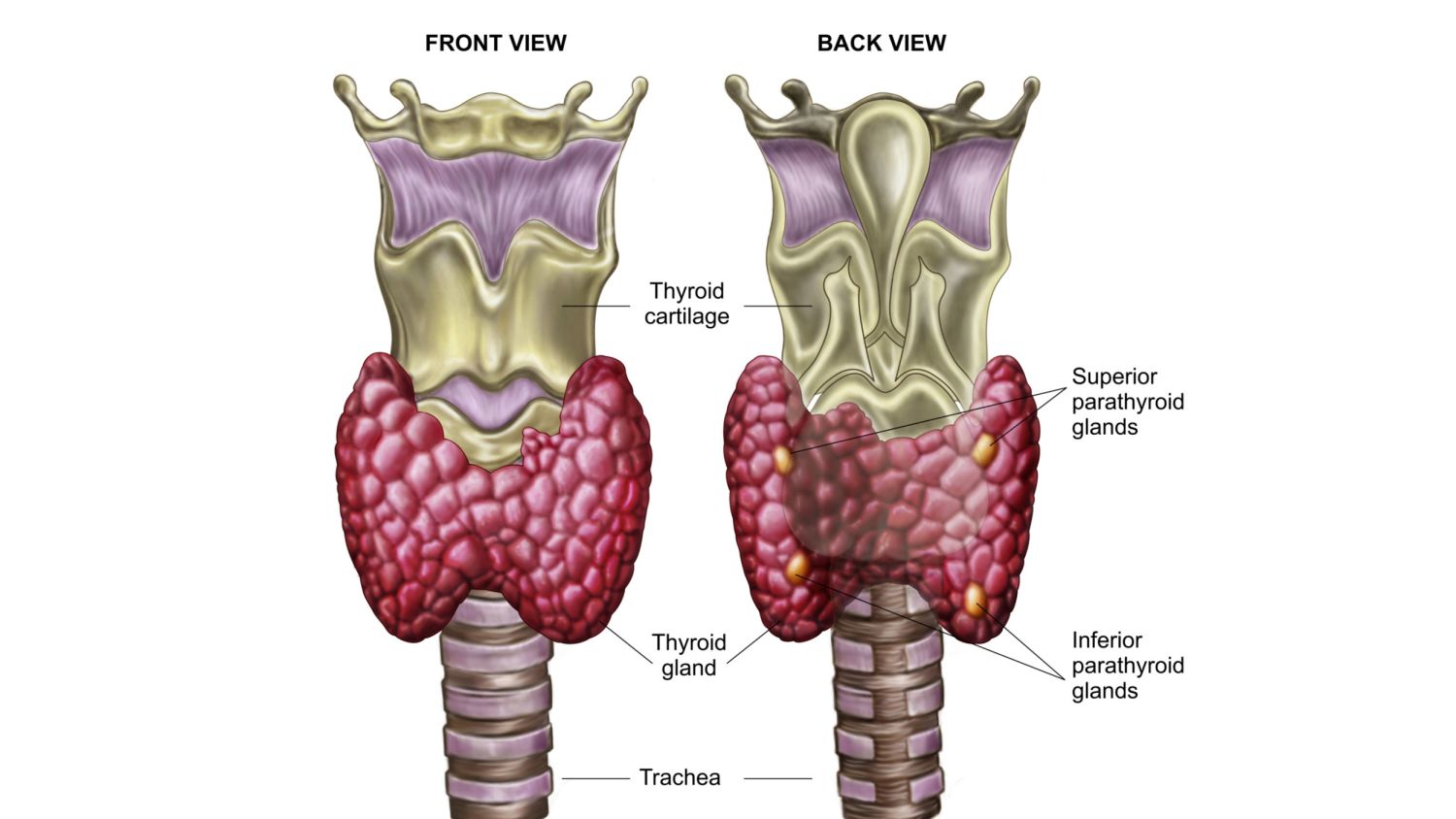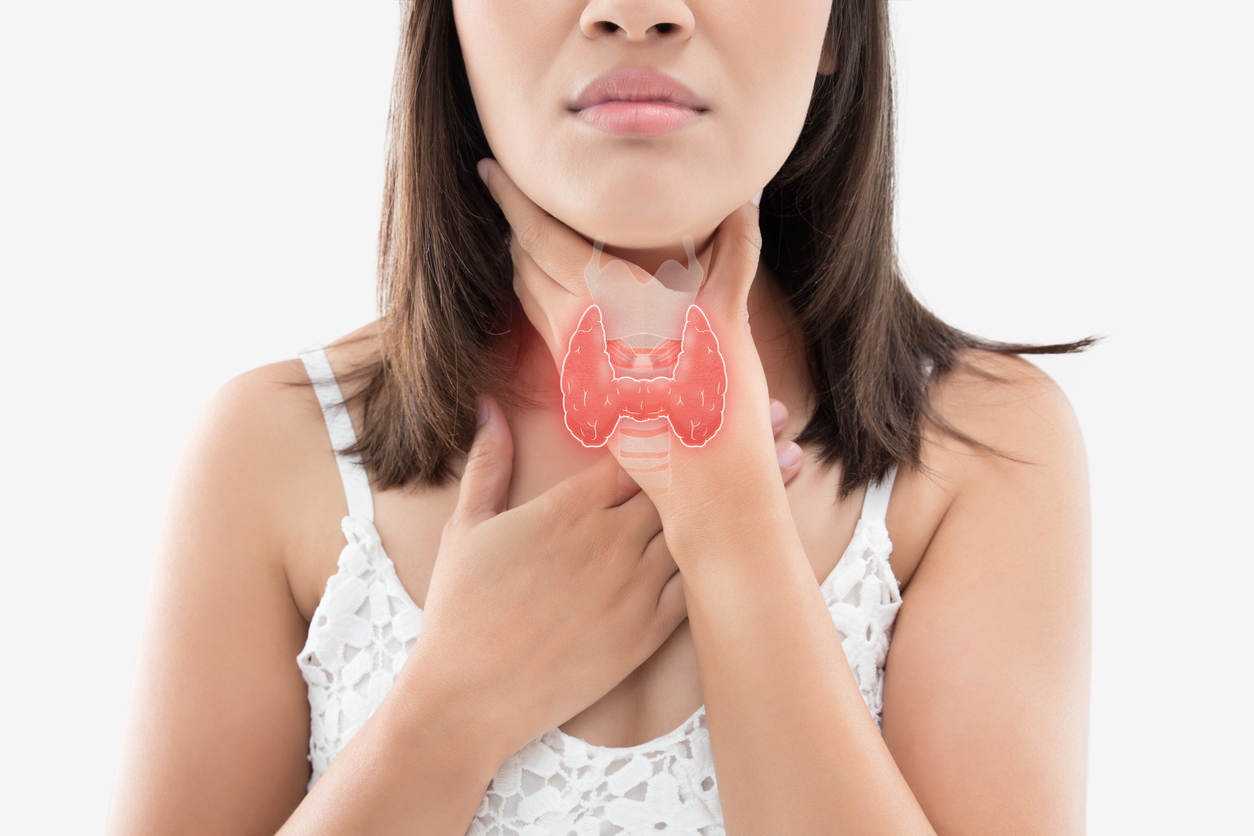Thyroid Awareness Month: How Essential Is The Thyroid?
January 19, 2023
January is ‘Thyroid Awareness Month’, which calls attention to the various health problems connected to the thyroid. Most of us have heard about thyroid glands, but we may not realize the importance of the gland or that we may have symptoms of a disease. Therefore, this month is dedicated to talking about thyroid disease – the conditions and symptoms, the importance of diagnosis and treatment. In addition, health experts hope that publicizing information about thyroid diseases will educate people and encourage them to visit their physicians.
WHAT IS THE THYROID AND WHAT IS ITS FUNCTION?

The thyroid gland is a butterfly-shaped endocrine gland located in the lower front of the neck. The role of the thyroid is to make thyroid hormones. These hormones are secreted into the blood and then carried throughout the body. The Thyroid controls the body’s metabolism, increases heart rate, and affects how fast things move through the body such as food, bone loss, and sugar. It is thought to be the most important endocrine organ!
ADDITIONAL FUNCTIONS OF THE THYROID
The gland is part of the endocrine system, which directly affects almost every single organ. It is responsible for regulating skin integrity, menstrual cycles, calcium levels, and the nervous system, heart, and cholesterol levels. In addition, it controls brain development, body temperature, respiration, metabolism, and fat production. Thyroid problems begin to occur when the thyroid gland produces too much hormone or not enough.
WARNING SIGNS OF THYROID PROBLEM
There are a variety of symptoms you could experience if you have thyroid disease. Unfortunately, symptoms of a thyroid condition are often very similar to the signs of other medical conditions and stages of life. This can make it difficult to know if your symptoms are related to a thyroid issue or something else entirely.
For the most part, the symptoms of thyroid disease can be divided into two groups — those related to having too much thyroid hormone (hyperthyroidism) and those related to having too little thyroid hormone (hypothyroidism). Symptoms of an overactive thyroid (hyperthyroidism) can include:
- Experiencing anxiety, irritability, and nervousness
- Having trouble sleeping
- Losing weight
- Having an enlarged thyroid gland or a goiter
- Having muscle weakness and tremors
- Experiencing irregular menstrual periods or having your menstrual cycle stop
- Feeling sensitive to heat
- Having vision problems or eye irritation
Symptoms of an underactive thyroid (hypothyroidism) can include:
- Feeling tired (fatigue)
- Gaining weight
- Experiencing forgetfulness
- Having frequent and heavy menstrual periods
- Having dry and coarse hair
- Having a hoarse voice
- Experiencing an intolerance to cold temperatures
THYROID GLAND DISEASE

Thyroid disease is a general term for a medical condition that keeps your thyroid from making the right amount of hormones. Your thyroid typically makes hormones that keep your body functioning normally. When the thyroid makes too much thyroid hormone, your body uses energy too quickly. This is called hyperthyroidism. Using energy too quickly will do more than make you tired — it can make your heart beat faster, cause you to lose weight without trying and even make you feel nervous. On the flip side of this, your thyroid can make too little thyroid hormone. This is called hypothyroidism. When you have too little thyroid hormone in your body, it can make you feel tired, you might gain weight and you may even be unable to tolerate cold temperatures.
These two main disorders can be caused by a variety of conditions. They can also be passed down through families (inherited).
WHO IS AFFECTED BY THYROID DISEASE?
Thyroid disease can affect anyone — men, women, infants, teenagers, and the elderly. It can be present at birth (typically hypothyroidism) and it can develop as you age (often after menopause in women). Thyroid disease is very common, with an estimated 20 million people in the United States having some type of thyroid disorder. A woman is about five to eight times more likely to be diagnosed with a thyroid condition than a man.
- You may be at a higher risk of developing a thyroid condition if you:
- Have a family history of thyroid disease
- Have a medical condition (these can include pernicious anemia, Type 1 diabetes, primary adrenal insufficiency, lupus, rheumatoid arthritis, Sjögren’s syndrome and Turner syndrome)
- Take a medication that’s high in iodine (amiodarone)
- Are older than 60, especially women
- Have had treatment for a past thyroid condition or cancer (thyroidectomy or radiation)
WHAT CAUSES THYROID DISEASE?
The two main types of thyroid disease are hypothyroidism and hyperthyroidism. Both conditions can be caused by other diseases that impact the way the thyroid gland works. Conditions that can cause hypothyroidism include:
- Thyroiditis: This condition is an inflammation (swelling) of the thyroid gland. Thyroiditis can lower the amount of hormones your thyroid produces.
- Hashimoto’s thyroiditis: A painless disease, Hashimoto’s thyroiditis is an autoimmune condition where the body’s cells attack and damage the thyroid. This is an inherited condition.
- Postpartum thyroiditis: This condition occurs in 5% to 9% of women after childbirth. It’s usually a temporary condition.
- Iodine deficiency: Iodine is used by the thyroid to produce hormones. An iodine deficiency is an issue that affects several million people around the world.
- A non-functioning thyroid gland: Sometimes, the thyroid gland doesn’t work correctly from birth. This affects about 1 in 4,000 newborns. If left untreated, the child could have both physical and mental issues in the future. All newborns are given a screening blood test in the hospital to check their thyroid function.
Conditions that can cause hyperthyroidism include:
- Graves’ disease: In this condition, the entire thyroid gland might be overactive and produce too much hormone. This problem is also called diffuse toxic goiter (enlarged thyroid gland).
- Nodules: Hyperthyroidism can be caused by nodules that are overactive within the thyroid. A single nodule is called a toxic autonomously functioning thyroid nodule, while a gland with several nodules is called a toxic multi-nodular goiter.
- Thyroiditis: This disorder can be either painful or not felt at all. In thyroiditis, the thyroid releases hormones that are stored there. This can last for a few weeks or months.
- Excessive iodine: When you have too much iodine (the mineral that is used to make thyroid hormones) in your body, the thyroid makes more thyroid hormones than it needs. Excessive iodine can be found in some medications (amiodarone, a heart medication) and cough syrups.
DIAGNOSIS AND TREATMENT
Sometimes, thyroid disease can be difficult to diagnose because the symptoms are easily confused with those of other conditions. You may experience similar symptoms when you are pregnant or aging and you would when developing a thyroid disease. Fortunately, there are tests that can help determine if your symptoms are being caused by a thyroid issue. These tests include:
- Blood tests
- Imaging tests
- Physical exams
One of the most definitive ways to diagnose a thyroid problem is through blood tests. Thyroid blood tests are used to tell if your thyroid gland is functioning properly by measuring the amount of thyroid hormones in your blood. These tests are done by taking blood from a vein in your arm. Thyroid blood tests are used to see if you have:
- Hyperthyroidism
- Hypothyroidism
Thyroid blood tests are used to diagnose thyroid disorders associated with hyper- or hypothyroidism. These include:
- Thyroiditis
- Graves’ disease
- Hashimoto’s disease
- Goiter
- Thyroid nodule
- Thyroid cancer
IMAGING TESTS

In many cases, taking a look at the thyroid itself can answer a lot of questions. Your healthcare provider might do an imaging test called a thyroid scan. This allows your provider to look at your thyroid to check for an increased size, shape, or growth (nodules).
Your provider could also use an imaging test called an ultrasound. This is a diagnostic procedure that transmits high-frequency sound waves, inaudible to the human ear, through body tissues. The echoes are recorded and transformed into video or photographic images. You may think of ultrasounds related to pregnancy, but they are used to diagnose many different issues within your body. Unlike X-rays, ultrasounds do not use radiation.
FINAL THOUGHT
Thyroid awareness is key to helping people recognize the symptoms of thyroid problems. With better awareness, people will know when to talk to their doctors about testing and treatment. This January, we urge you to help us raise awareness during Thyroid Awareness Month and to take part in the fight to treat undiagnosed thyroid conditions and even other forms of cancer. Did you find this article informative? Any other topics you would like us to cover? Please leave your comments down below!
Explore Other Blog Items By Category
Recent Posts


EKG vs ECG | What’s the Difference Between ECG and EKG?


1 comment